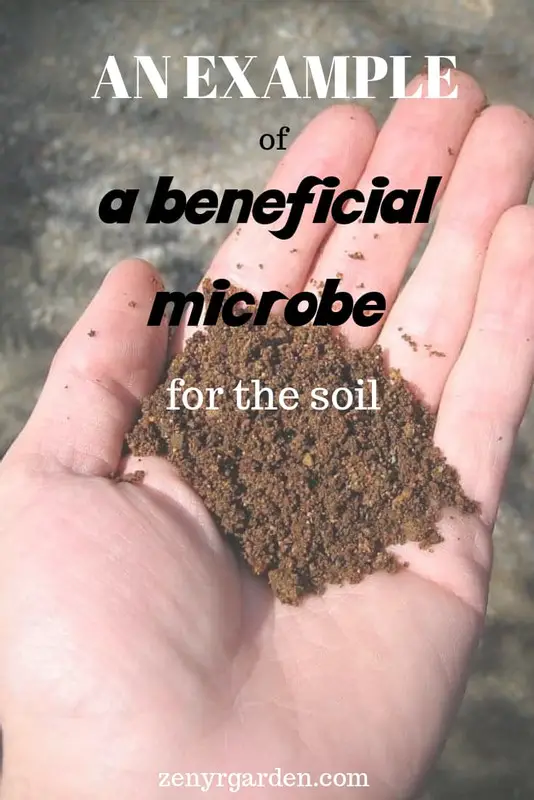One example of a beneficial microorganism is the well-known Lactobacillus bacteria. It exists in milk, helps make yogurt & improves our digestion.
Saccharomyces is another good bacteria that helps people make bread & beer. Thanks to these guys, the foods we eat are much easier to digest, much more nutritious & many times taste even better.
You'll find many good microbes in the fermentation process which are incredibly useful in the garden. Especially for our composting purposes.
These little creatures help us build the soil fertility, provide immediately-digestible nutrients to the plants & eliminate odor in compost piles. Some can even help purify the water & toxic gases in ponds.
Let's Meet The Microbe Faces Now
When people talk about microorganism, they usually refer to different types of micro species invisible to the naked eyes like bacteria, fungi, algae.
Good news is, not all microbes are bad. Like many things, within the world of micro-organisms, there are bad microbes and there are good microbes that can actually be of good use to us.
If you would have a look at the table below, you can see the two groups of microbes, the good guys and the bad ones:
| Beneficial | Potentially harmful |
|---|---|
| Bacteria | Archea |
| Fungi | Viruses |
| Algae | Protozoa |
| - | Parasites |
Within the microbes, the good guys are usually beneficial bacteria, fungi, algae. The not-so-good ones are parasites, viruses and so on.
Although there are many bad microbes hanging around, there are still many good microbes that we can use to our benefits. The beneficial microbes we focus here would be mostly good bacteria & fungi.
Some algae are actually very beneficial too. Up until now, there is still relatively little research about them. But they can be an interesting exploration & we'll find out more about them in the future hopefully.
So till now you already know two of the most common bacteria, Lactobacillus & Saccharomyces, and here are some other ones that might be of interest:
1. Lactic Acid Bacteria (LAB):
These ones can lactate (turn into sour lactic acid) the carbohydrate in the foods they eat, creating an acidic or sour environment that other pathogens don't dare to step foot in.
You can notice them in foods like fermented cabbage with their characteristic sour smell. Or that sour taste we usually get in yogurt. The LAB guys are present in these foods.
Speaking a little more on the topic of lacto, they did an experiment back in Helsinki University where they put E.Coli (a bad microbe) on agar petri dishes then pipetted some lacto in and incubated it.
A few days later, when the researchers took the petri dishes out of the incubator, they noticed several circular zones (some larger than others) surrounding the E.Coli. It seemed to be the lacto. And they all linked up together to surround the bad guy. With some sort of probiotics produced by the lacto, it thus inhibited the further growth of E.Coli.
When LAB was used in appropriate proportion with other herbs and fermented plant juice (FPJ), it stopped a lice infestation on a chicken farm of around 60 thousand layer hens.
Speaking of micro-organism, another good microbe many bakers or cooking moms often use is:
2. Yeast:
Yeast is widely used in bread & beer making. They thrive in a starchy environment, i.e. one that is full of carbohydrates. Saccharomyces cerevisiae is one common example. You can also find them in yeast balls where they use to make alcohol like soju wine or rice wine.
In other places like fish pond, you may also find these:
3. Photosynthetic Bacteria (PSB):
These microbes love light. They grow & multiply exponentially under good sunlight–not too harsh. You'll find plenty of them in hot spring water, rain water, Guppy fish pond water, irrigation canals & sometimes tap water.
What's a Good Fungi People Often Use for Composting?
The fungi people often use to compost animal manure or for home composting is called Trichoderma.
This is a good fungi & they usually sell them in a pre-packaged bag. With these established in your compost, the other bad molds won't be anywhere near.
Please note: Trichoderma doesn't like a lot of heat though.
Speaking of Good Microbes, Have You Also Heard About IMO?
The microbes in one area may be different from the other one as they have been through a process of what some call localization.
So they have something called the IMO or indigenous microorganism, where we actually go out in the local forests to 'hunt' for these guys.
People build a collection box with hard-cooked non-sticky rice grains in it to attract the microbes.
After the collection, they can harness its power to add back essential nutrients to the soil, prevent diseases for the plants & increase overall crops and biology.
If the microbes themselves are good, then:
Can We Combine the Different Microbes?
The next question many folks ask when knowing a bit about beneficial microbes is can we combine them for powerful synergy or will they compete with or cannibalize each other.
To be honest with you, we don't really know. According to Dr. Teruo Higa, who founded and coined the term effective micro-organisms EM, it's the synergy of some microbes (like LAB, yeast, psb) that makes it even more effective. So there is some indication for going into that direction.
It's certainly a great question for exploration. If we can bring about the synergy of good microbes (bacteria + fungi), then it will be a great symphony of nature. With that said, keep on exploring & See you again next time.
Here's how you can make & multiply that LAB thing at home. It's called EM but pretty much a similar thing, as LAB is usually the dominant microbe in it.
The link is at:
Here's the IMO that we talk briefly about:
Share or pin this post!


